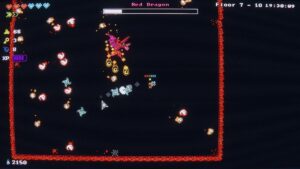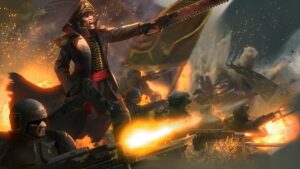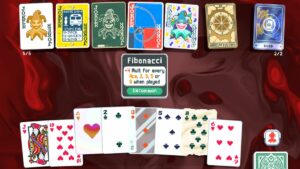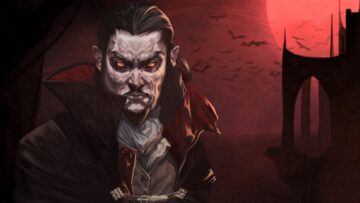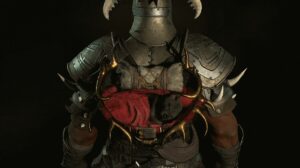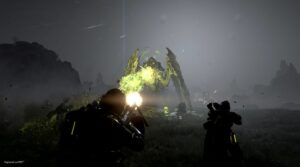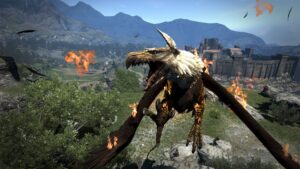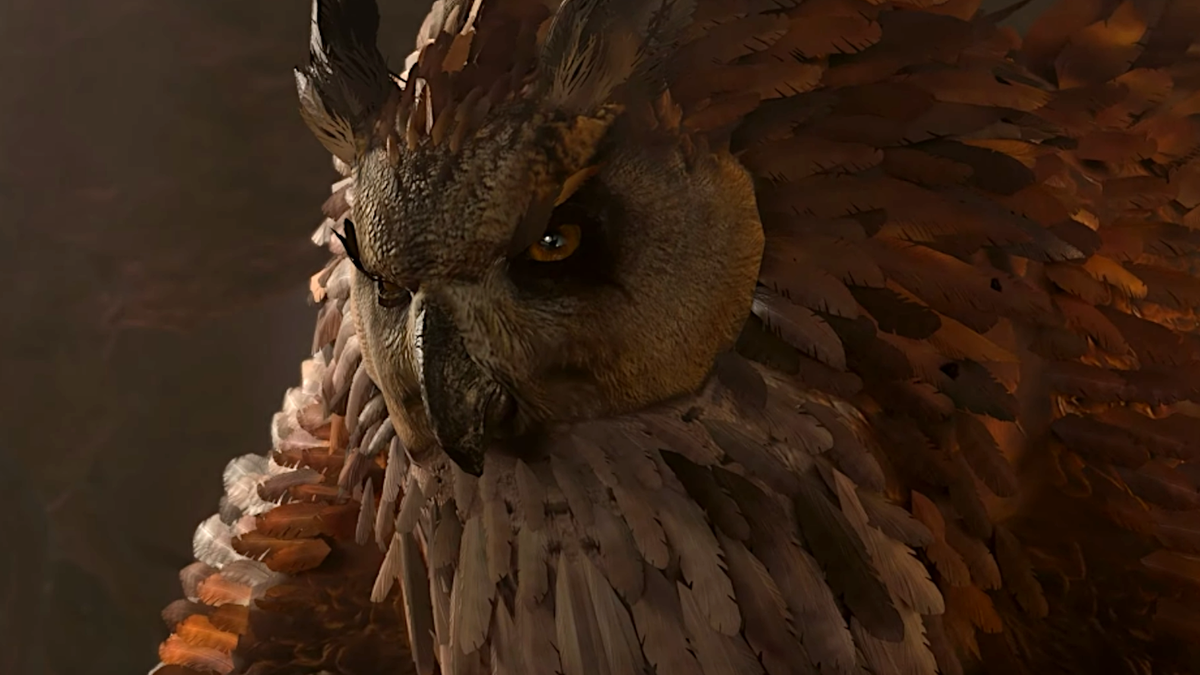
Typically, galaxy-brained hijinks like the one I’m about to dive into are usually confined to the realms of pen and paper—abusing some quirk from a DM’s homebrew rulings in a game of Dungeons and Dragons.
But thanks to some of Larian’s design decisions, druids in Baldur’s Gate 3 can turn their owlbear wildshape into a living meteor, using it to deal anywhere from 800 to a whopping 1,170 damage against the right enemy. For context, I have my Monster Manual open in front of me: an Adult Red Dragon, a monster designed to pose a threat to a party of four level 17 characters, has 256 hit points. This is enough to kill that monster four times.
You can see the devastating effect of this bug fluffy meteor for yourself down below—first by Reddit user Fishbleb, who uses it to flatten an Act 1 boss, and later by streamer Ellohime, who drops in “from the top rope” for 800 damage during Act 2.
So apparently crushing flight scales with mass 😈 from r/BaldursGate3
OWLBEAR FROM THE TOP ROPE 800 DMG!Some asked so….Crushing Flight = no fall dmgStack boxes, climb, shapeshift, enlarge (jump spell if needed)5005kg from 31.6m = 821 bludg dmgJust knowing weight/height fall dmg exists has creative implications, have fun with that😈 pic.twitter.com/ZGFaZKVQ8jAugust 10, 2023
Now, granted, the higher of those numbers is dealt to a golem who has vulnerability to bludgeoning damage, doubling what it receives. Still, even the 800 damage example would one-shot an adult red, regardless of whether it makes its save—especially since crushing damage from a falling object doesn’t seem to care whether you succeed or fail: both of the above victims passed their save, and it didn’t spare them.
This is because Crushing Flight, an ability from the owlbear wildshape, both nullifies fall damage for the user and counts as dropping an object on an enemy, something which scales linearly off mass with no upper weight limit. Both players achieve these absurd numbers by shapeshifting into an owlbear, drinking a potion of Enlarge (or having the spell cast on them), finding a ledge to bounce off, and plummeting to the earth like a meteor flung down by a vengeful god.
While this might seem like a video-game glitch, it’s a time-honoured tradition for anyone familiar with the peasant railgun. For the uninitiated, the “peasant railgun” is a thought experiment in D&D 5th edition where you line up 500 or so peasants in a row. You give one peasant an iron bar, then have every other peasant ready their action to pass it along to the next peasant in line.
Since turns in D&D pass in 6 second increments, each peasant occupies a 5ft square, and there’s no limit to the amount of readied actions that can trigger in a turn (aside from each peasant having one reaction to spend), the bar travels 2,500 feet in the span of 6 seconds across 500 peasants—hitting a speed of 1,700 miles per hour—ejecting the bar at the other end to punch a hole in whatever’s facing it.
Granted, in your typical game, the DM can just say: ‘You’re applying real-world physics to a tabletop game, stop it or I’m revoking snack privileges.’ Or, if they want to be a rules lawyer, they have grounds to rule that the bar drops to the floor at the end of the line, since there aren’t any rules covering fast-moving objects like that.
The difference with this owlbear meteor strategy, however, is that Larian Studios can’t say no. It programmed weight-scaling orbital cannons into Baldur’s Gate 3 and, until the interaction’s patched, there’s nothing it can do to stop you from mulching your foes with nothing more than a single spell, a cliff, and one big fluffy boy.
- SEO Powered Content & PR Distribution. Get Amplified Today.
- PlatoData.Network Vertical Generative Ai. Empower Yourself. Access Here.
- PlatoAiStream. Web3 Intelligence. Knowledge Amplified. Access Here.
- PlatoESG. Automotive / EVs, Carbon, CleanTech, Energy, Environment, Solar, Waste Management. Access Here.
- PlatoHealth. Biotech and Clinical Trials Intelligence. Access Here.
- ChartPrime. Elevate your Trading Game with ChartPrime. Access Here.
- BlockOffsets. Modernizing Environmental Offset Ownership. Access Here.
- Source: https://www.pcgamer.com/this-owlbear-orbital-strike-in-baldurs-gate-3-can-deal-1170-points-of-bludgeoning-damage-which-is-enough-to-kill-an-adult-red-dragon-four-times
- :has
- :is
- :where
- $UP
- 1
- 10
- 12
- 17
- 31
- 500
- 5th
- 700
- 9
- a
- ability
- About
- above
- Achieve
- across
- Act
- Action
- actions
- Adult
- against
- along
- amount
- an
- and
- any
- anyone
- anywhere
- Applying
- ARE
- AS
- At
- bar
- BE
- because
- Big
- BOSS
- both
- Bounce
- boxes
- Bug
- button
- by
- CAN
- care
- characters
- climb
- Cms
- context
- covering
- Creative
- damage
- deal
- decisions
- Design
- designed
- devastating
- difference
- DM
- do
- doesn
- doubling
- down
- Dragon
- Dropping
- Drops
- during
- each
- earth
- edition
- effect
- end
- enlarge
- enough
- Ether (ETH)
- Even
- Every
- example
- exists
- experiment
- facing
- FAIL
- Fall
- Falling
- familiar
- fast-moving
- Feet
- finding
- flight
- Floor
- For
- four
- from
- front
- fun
- game
- Give
- glitch
- God
- granted
- Have
- having
- higher
- Hit
- Hole
- However
- HTTPS
- i
- if
- implications
- in
- interaction
- into
- IT
- ITS
- jump
- just
- Kill
- Knowing
- later
- lawyer
- Level
- like
- LIMIT
- Line
- living
- MAKES
- manual
- Mass
- me
- might
- more
- my
- needed
- next
- no
- nothing
- numbers
- object
- objects
- occupies
- of
- off
- on
- ONE
- open
- or
- Other
- party
- pass
- passed
- per
- Physics
- plato
- Plato Data Intelligence
- PlatoData
- players
- points
- privileges
- programmed
- punch
- RE
- reaction
- ready
- real world
- receives
- Red
- Regardless
- right
- ROW
- Rule
- rules
- s
- Save
- say
- scales
- seasonal
- Second
- seconds
- see
- seem
- shapeshift
- since
- single
- So
- some
- something
- span
- speed
- SPELL
- spend
- square
- Still
- Stop
- Strategy
- strike
- studios
- succeed
- T
- than
- thanks
- that
- The
- their
- Them
- then
- There.
- These
- they
- this
- those
- thought
- threat
- times
- to
- top
- tradition
- travels
- trigger
- TURN
- turns
- Twitch
- typical
- until
- User
- uses
- using
- usually
- victims
- vulnerability
- want
- weight
- What
- whatever
- whether
- which
- WHO
- with
- would
- you
- Your
- yourself
- zephyrnet

